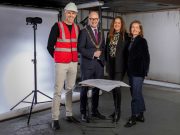Voice of the Customer research programmes, if managed and set up correctly can help businesses not just to better understand customer satisfaction as they interact with the brand, but also provides them with the tools to act and immediately improve any poor interaction, writes Richard Colwell.
The ability to “close the loop” on each individual that interacts with the business, turns “nice to know” research, into actionable and valuable resource for maximising customer loyalty. Voice of the Customer software allows clients to set action limits on certain measures and each individual customer case that falls below these levels is immediately forwarded to the appropriate person for action. Case notes are kept on the system until they are resolved. This means that rather than just act as passive a measure of satisfaction, Voice of the Customer programmes actually help clients to actively improve loyalty over time.
So what are the key aspects of a Voice of the Customer programme that we have learnt while implementing programmes for clients such as Aer Lingus?
Take Your Time: A comprehensive VoC survey can get pretty complicated, so time taken at the set up stage pays huge dividends down the line. In particular, understanding the hierarchy that you will want to report and interview at is crucial. Data in your online dashboards is built from the bottom up. So it is important to understand how the data will be disseminated across the business before you start interviewing.
Keep it Simple: While it is tempting to keep adding in more and more questions to your survey, this really isn’t the best approach. Voice of the Customer surveys rely on the good will of your customers in responding to your surveys, so don’t annoy them by asking questions that simply are not that important. You will learn far more by keeping surveys short and getting a greater response that can be analysed across interactions and moments of truth.
Walk before you Run: Implementation is best conducted on a staged approach to make sure that you can manage the volume of data, the internal demand and the follow up process with customers. Introduce new silos of surveys one at a time to keep the process clear, design and deliver real time dashboards once you really know what you want to see in them after analysing initial data, and likewise develop response route for closing the loop once you have seen how many cases will be coming down the line. The worst thing a company can do is say they will follow up on poor service, only for them to fail to do so!
Employ Experts: The volume of surveys completed can seem daunting, for Aer Lingus we have seen up to 500 surveys completed a day. This provides real Big Data for a business to analyse at a minutiae level. While professional software helps the business to impart this data to the relevant people across the business, it is important that someone is still looking at the bigger picture.
Everyone has experienced how we can get bogged down in responding to one unhappy customer on social media, that doesn’t fully reflect the majority of customer’s experiences. That is why all of the Voice of the Customer clients we work with have retained RED C to regularly do deep dive analysis of the results across all customers, in order to help prioritise issue areas and retain the bigger picture.
Richard Colwell is managing director of RedC.






















